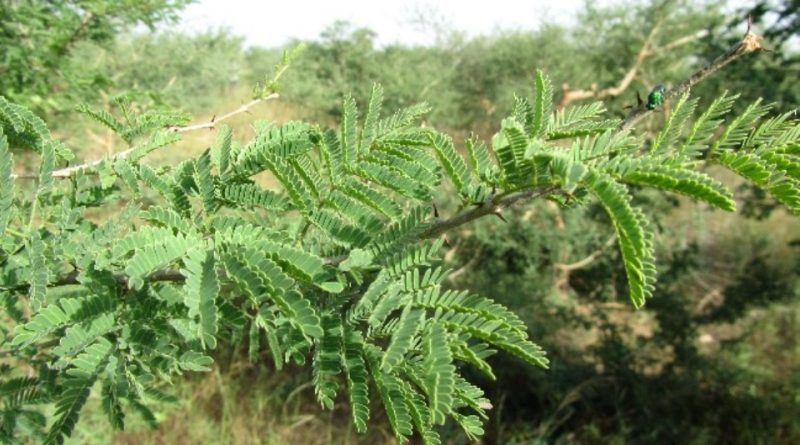Senegalia senegal
Senegalia senegal
Senegal Acacia o Gum acacia (Senegalia senegal (Britton)) is a shrub species belonging to the Fabaceae family.
Systematic –
From a systematic point of view, it belongs to the Eukaryota Domain, Plantae Kingdom, Subregion Tracheobionta, Spermatophyta Superdivision, Magnoliophyta Division, Magnoliopsida Class, Rosidae Subclass, Fabales Order, Fabaceae Family, Mimosoideae Subfamily, Acacieae Tribe and therefore to the Genus Acacia and the Species A. Senegal .
The terms are synonymous:
– Acacia circummarginata Chiov .;
– Acacia cufodontii Chiov .;
– Acacia glaucophylla sensu Brenan;
– Acacia kinionge sensu Brenan;
– Acacia oxyosprion Chiov .;
– Acacia rupestris Boiss .;
– Acacia senegal (L.) Willd .;
– Acacia senegal subsp. modest (Wall.) Roberty;
– Acacia senegal subsp. senegalensis Roberty;
– Acacia somalensis sensu Brenan;
– Acacia spinosa Marloth & Engl .;
– Acacia thomasii sensu Brenan;
– Acacia volkii Suess .;
– Mimosa senegal L.
Etymology –
The term of the genus Senegalia refers to Senegal, a nation of West Africa, presumed place of origin of plants of this genus.
The specific Senegal epithet strengthens the origin and specificity of this species from Senegal.
Geographical Distribution and Habitat –
Senegal’s Acacia is a plant native to tropical Africa where it is widespread in regions ranging from Senegal to Mauritania and in eastern Africa to Eritrea and Ethiopia. We also find it in South Africa, the Middle East (Yemen, Oman) and Asia (Pakistan, India) and, subsequently, it was introduced in Egypt, Australia, Puerto Rico and the Virgin Islands.
Description –
Senegalia senegal is a plant with a habit that can assume the shrubby one or a thorny, deciduous tree, with dimensions that can make it reach 15 m. in height.
The bark has a color that varies from yellowish brown to blackish in old trees. The leaves are bipinnate and alternate on each side of the stem, with the leaves that make them up which are arranged in 7–25 pairs, linear to elliptical – oblong in shape.
Cultivation –
Senegal Acacia, like other acacias, prefers soils that are also arid and in any case well drained and in any case it is a rustic plant and simple enough to grow. It can also be grown not only in open ground but also in pots: obviously if the plant is grown in pots, the dimensions will remain very small.
To grow acacia outdoors, you must choose a place sheltered from the wind and in full sun, while in the apartment it must be kept in a cool area and in a very bright position, even in direct sunlight.
for the details of the cultivation technique, see the following sheet.
Uses and Traditions –
The use of this acacia, like other acacias, dates back to the first Egyptian dynasty (3400 BC).
This plant was used to make an ink, consisting of a mix of coal, rubber and water. Thanks to the coexistence of water-soluble and fat-soluble components, gum arabic has emulsifying properties. It is therefore widely used in industry as a stabilizer, thickener or emulsifying agent. It is used in the textile, ceramic, lithography and cosmetic and pharmaceutical industries. Its best known use is undoubtedly as stamp glue. In the food industry, it is mainly used in the production of sweets, baked goods, dairy products and carbonated drinks.
From a nutraceutical point of view, gum arabic has a bifidogenic and probiotic effect. Therefore it helps to maintain a healthy intestinal flora.
The gum arabic, which is obtained from this plant, is a natural substance made up of several components including arabinose, widely used as a food additive, in crafts and as a cosmetic.
Gum is obtained by thickening the sap when it comes out of the plant.
To achieve this, incisions are made on the trunk of the plant. The incisions are made in February-March on the bark of the shrubs with at least 6 years. During the following month, the exudate is collected and dried.
Fiber and wood are also obtained from this plant, both for carpentry and for combustible material.
Preparation method –
The main product of Senegalia Senegal is the rubber which finds significant applications in the food field.
Guido Bissanti
Sources
– Acta Plantarum – Flora of the Italian Regions.
– Wikipedia, the free encyclopedia.
– Treben M., 2000. Health from the Lord’s Pharmacy, Tips and experiences with medicinal herbs, Ennsthaler Editore
– Pignatti S., 1982. Flora of Italy, Edagricole, Bologna.
– Conti F., Abbate G., Alessandrini A., Blasi C. (edited by), 2005. An annotated checklist of the Italian vascular flora, Palombi Editore.
Warning: Pharmaceutical applications and alimurgical uses are indicated for information purposes only, they do not in any way represent a medical prescription; therefore, no responsibility is accepted for their use for healing, aesthetic or food purposes.


